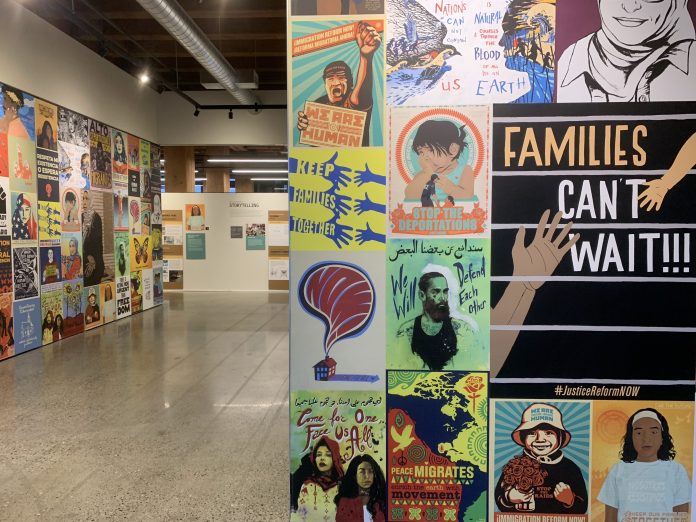“Sanctuary: Design for Belonging” runs from December 6th to February 23rd at The Center for Architecture & Design, 1010 Western Ave.
The floor to ceiling collage of brightly colored posters with slogans such as “Stop the Deportations,” “Migration is Beautiful,” and “We the Future Will Not be Banned,” is the first item grabs a visitor’s attention at Design in Public‘s newest exhibit, “Sanctuary: Design for Belonging,” which opened this past Thursday in their public showroom.
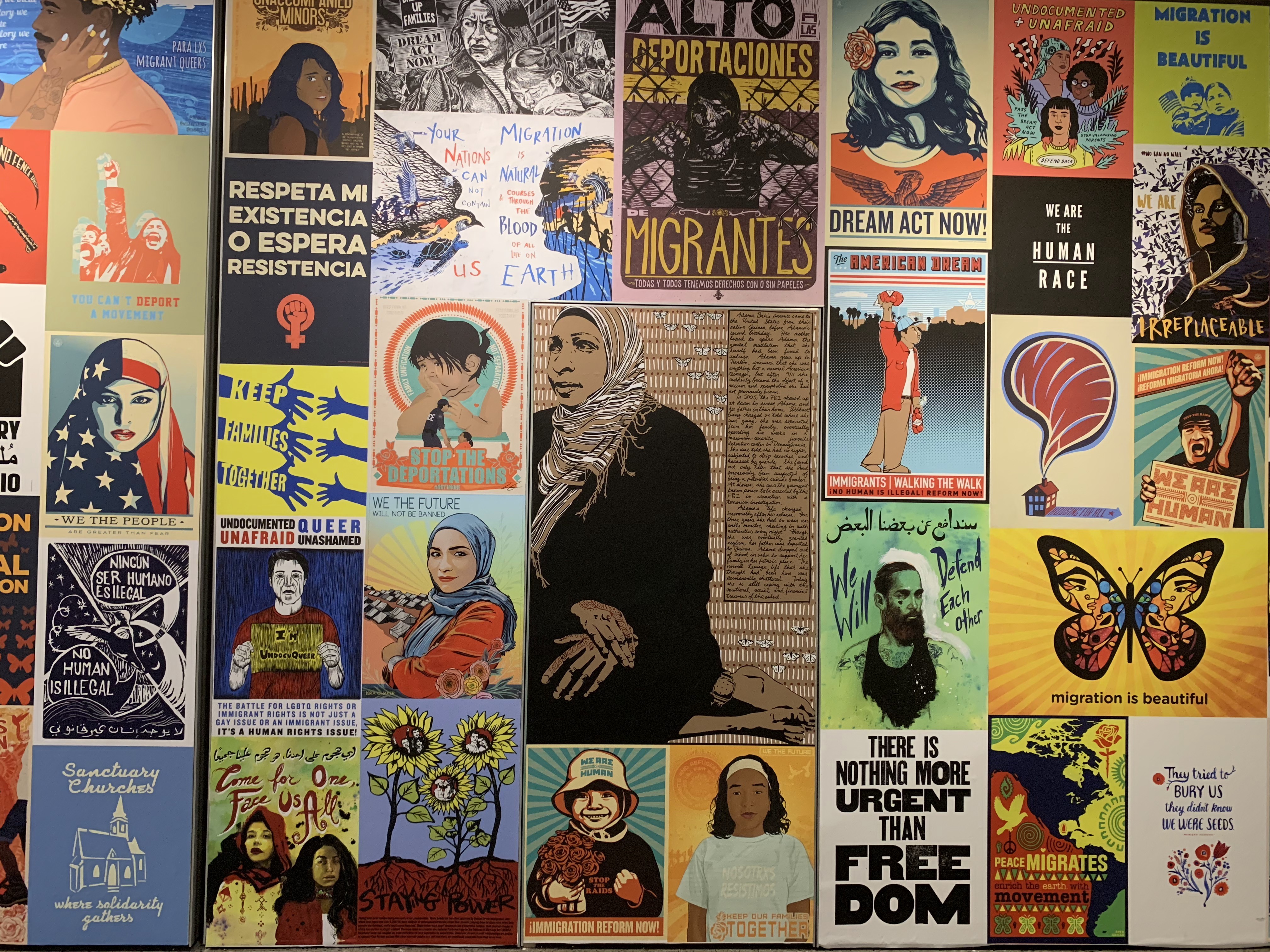
The posters are part of a graphic survey in which designers from around the world responded to a call to create a piece of graphic art that engaged with the themes of belonging, inclusivity, and home for the 65 million people who are currently displaced worldwide.
Debra Webb, director of Design in Public, first conceived of the survey while walking through an Oakland neighborhood a couple years earlier.
“I saw the poster ‘Refugees Are Welcome’ in every shop window for six to eight blocks,” said Webb, “and I thought, wow, this neighborhood is really making a statement through graphic design.”
The experience prompted Webb to partner with graphic artist Cleo Barnett to create a graphic survey of posters that engaged with social and political challenges faced by immigrants and refugees. Featuring work from both emerging and internationally renowned artists, the designs can be both global and hauntingly personal. One such poster features a kneeling woman in a hijab. Beside her in careful cursive script reads her story. She is Adamas, a young Guinean asylum-seeker whose teenage life was upended when she was thrown into an immigration detention center after being suspected of being a potential suicide bomber by the FBI in the aftermath of the 9/11 attacks.
“Today [Adamas] is still coping with the emotional, social, and financial traumas of the ordeal,” concludes the story, reminding the viewer of the lasting impacts endured by so many of the individuals’ whose difficult lives inspired the art before them.
A Global Exhibit and Competition Focuses on Seattle
Like “Displaced: Design for Inclusive Cities,” the design competition whose winners the “Sanctuary” features, the exhibit confronts the global problem of forced migration and proposes design solutions centered on urban environments. When Design in Public first decided to create a design competition and exhibit on this theme over two years ago, their vision was prescient. Today, with images of the migrant caravan at the US/Mexico border dominating television news, the topic has only increased in importance and relevance.
“We want to challenge architects, urban planners, all design professionals, to think of design solutions that positively impact refugees and immigrants,” said Webb.
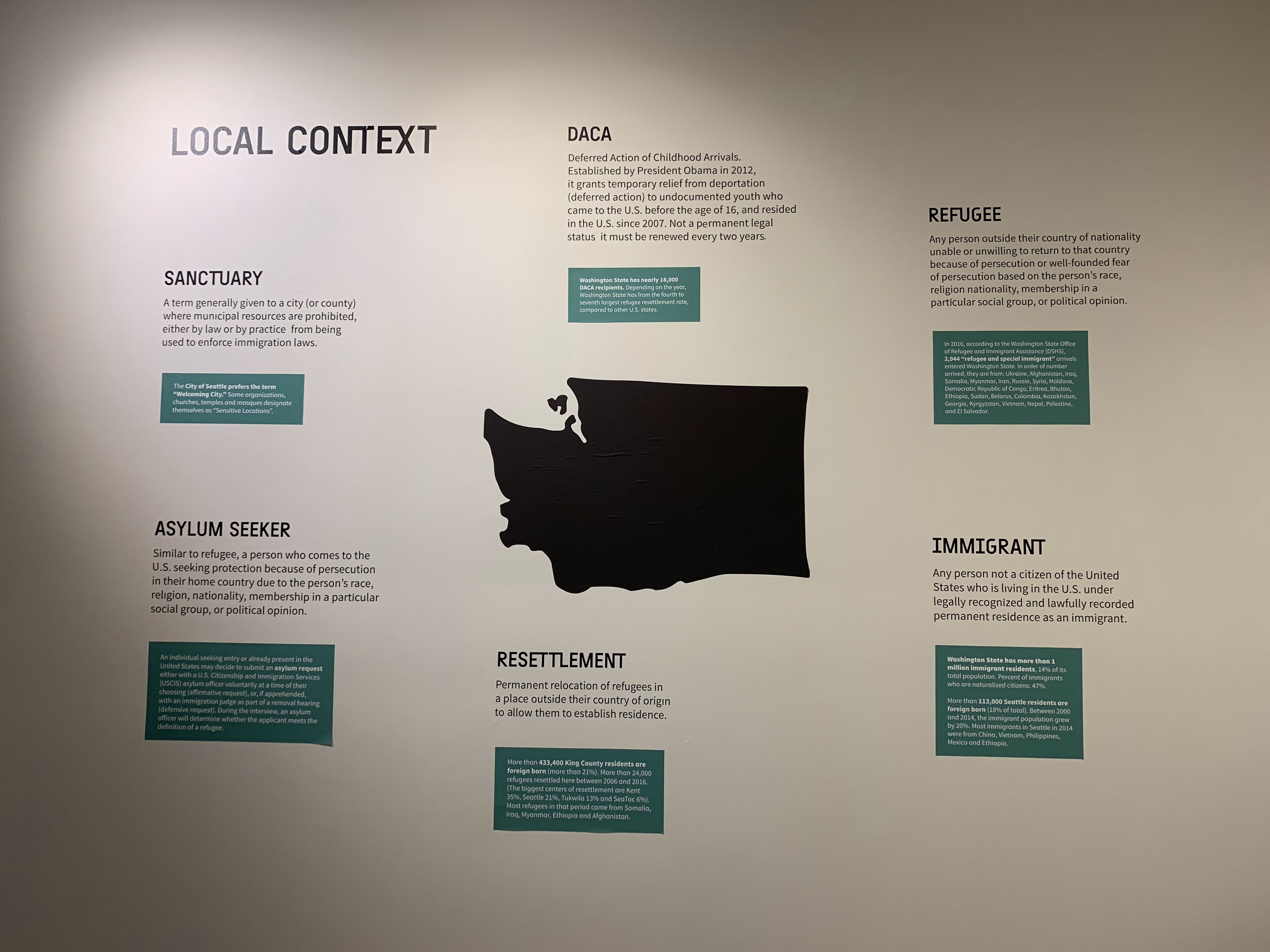
While the problem is global, the action that Design in Public seeks to inspire is decidedly local. As visitors move through displays organized by themes that emerged from the competition such as a “social innovation,” “shelter,” and “gathering spaces,” profiles of local nonprofits are shown side-by-side with the award wining designs. Personal quotes taken from local immigrants and refugees help round out the perspective on each theme. Visitors are also educated on the context surrounding the topic, such as what the difference is between a refugee, asylum-seeker, or immigrant, as well as what notable migration trends have shaped the demographics and culture of Washington State for over a hundred years.
The exhibit culminates in two specific calls to action. In the first, visitors are called on to support local organizations such as CAIR, Neighborhood House, El Centro de la Raza, and Horn of Africa Services, which serve local immigrant and refugee communities. In the second, visitors are encouraged to take an award winning poster home with them to put on display.
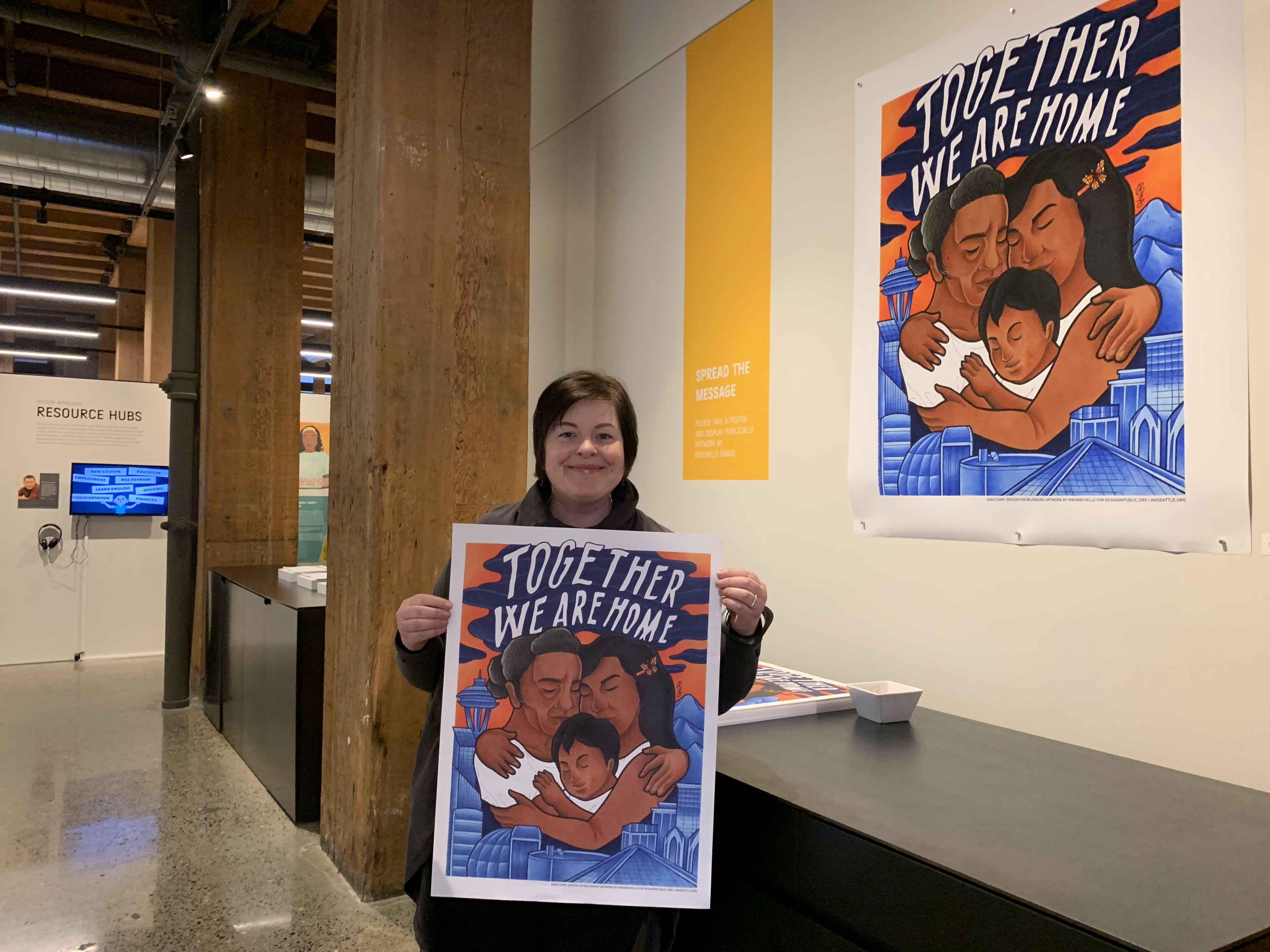
“I want visitors to understand the power of design to promote solutions of belonging,” Webb said. “As individuals we have the obligation and opportunity to have empathy and take action.”
As posters from the exhibit appear in more and more windows across Seattle, the hope is that the message of inclusivity and belonging promoted by the exhibit will last beyond when it closes in February. However, no matter what, the “Displaced: Design for Inclusive Cities” competition will have inspired a lasting landmark on the built environment in Seattle.
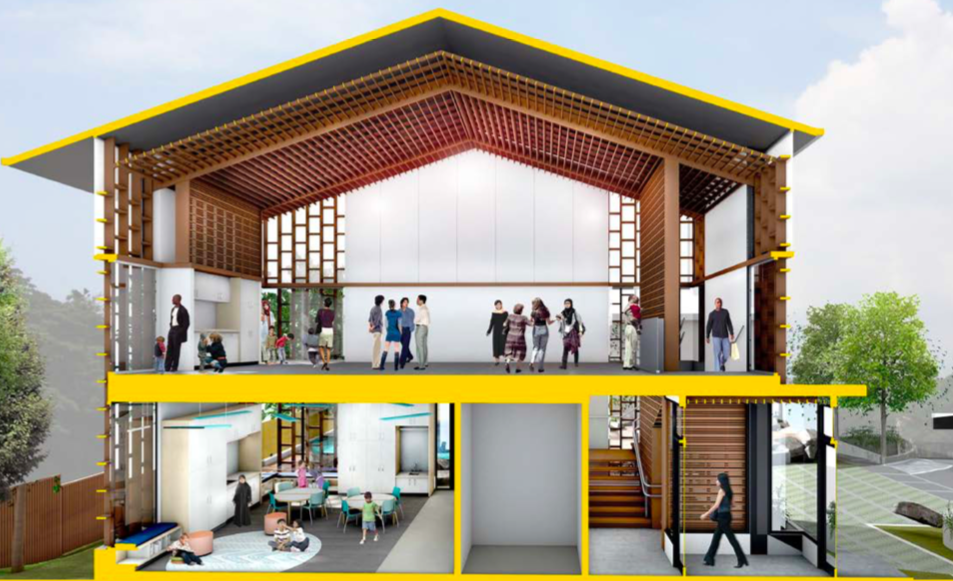
One of the competition proposals was the design for a new headquarters and gathering hall for the Refugee Women’s Alliance (REWA) in Rainier Valley. Currently under construction, the 6,300 square foot addition should be completed by the end of January. Featuring a preschool and daycare center, as well as other facilities intended for the community, the new addition will greatly increase REWA’s capacity to serve refugee families.
Natalie Bicknell Argerious (she/her) is a reporter and podcast host at The Urbanist. She previously served as managing editor. A passionate urban explorer since childhood, she loves learning how to make cities more inclusive, vibrant, and environmentally resilient. You can often find her wandering around Seattle's Central District and Capitol Hill with her dogs and cat. Email her at natalie [at] theurbanist [dot] org.

